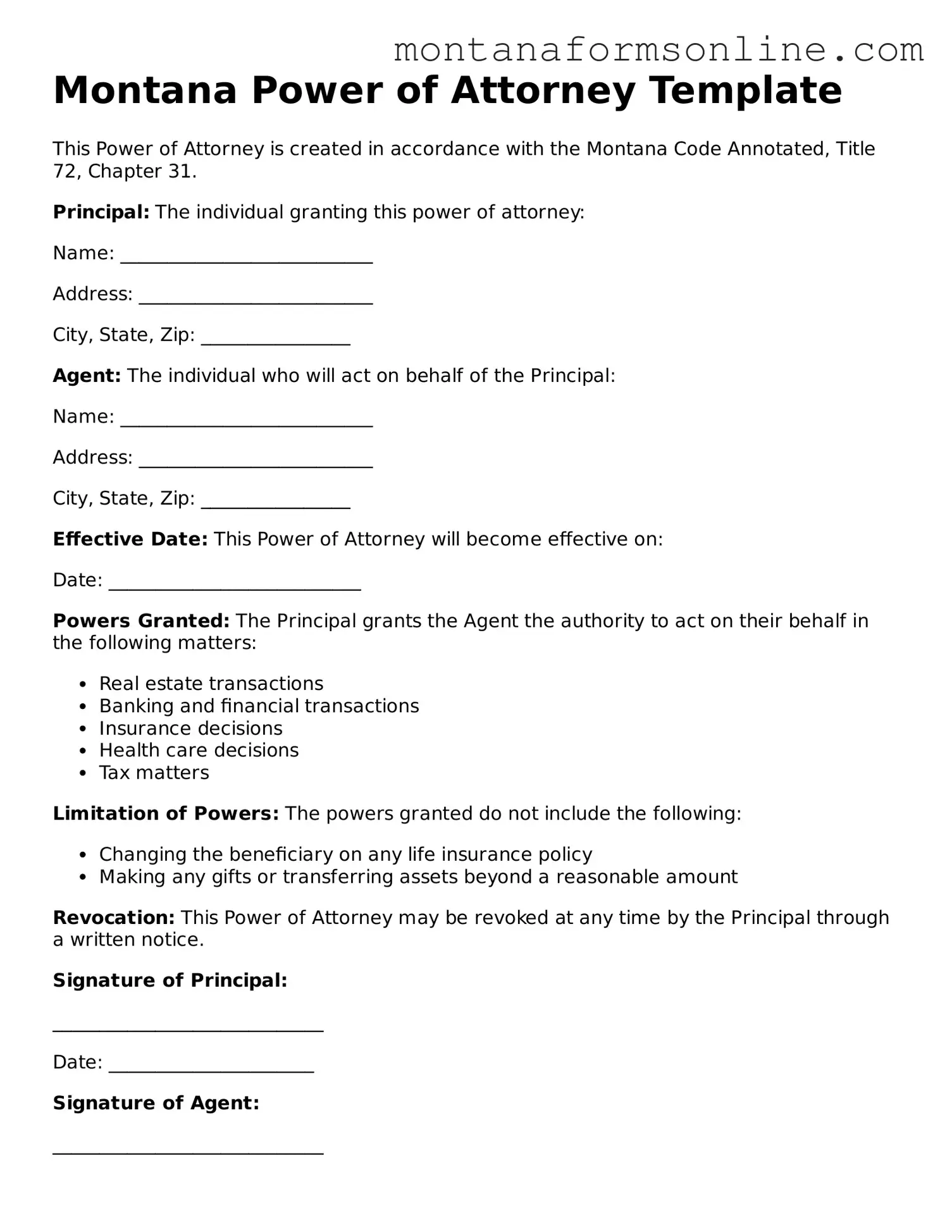Montana Power of Attorney Template
This Power of Attorney is created in accordance with the Montana Code Annotated, Title 72, Chapter 31.
Principal: The individual granting this power of attorney:
Name: ___________________________
Address: _________________________
City, State, Zip: ________________
Agent: The individual who will act on behalf of the Principal:
Name: ___________________________
Address: _________________________
City, State, Zip: ________________
Effective Date: This Power of Attorney will become effective on:
Date: ___________________________
Powers Granted: The Principal grants the Agent the authority to act on their behalf in the following matters:
- Real estate transactions
- Banking and financial transactions
- Insurance decisions
- Health care decisions
- Tax matters
Limitation of Powers: The powers granted do not include the following:
- Changing the beneficiary on any life insurance policy
- Making any gifts or transferring assets beyond a reasonable amount
Revocation: This Power of Attorney may be revoked at any time by the Principal through a written notice.
Signature of Principal:
_____________________________
Date: ______________________
Signature of Agent:
_____________________________
Date: ______________________
Witnesses: The following individuals witnessed the signing of this Power of Attorney:
- Name: ___________________________ Signature: ______________________ Date: _____________
- Name: ___________________________ Signature: ______________________ Date: _____________
Notary Public:
State of Montana
County of ________________________
On this _____ day of ____________, 20___, before me, a Notary Public, personally appeared the Principal and the Agent.
_____________________________
Notary Public for the State of Montana
My commission expires: ________________
